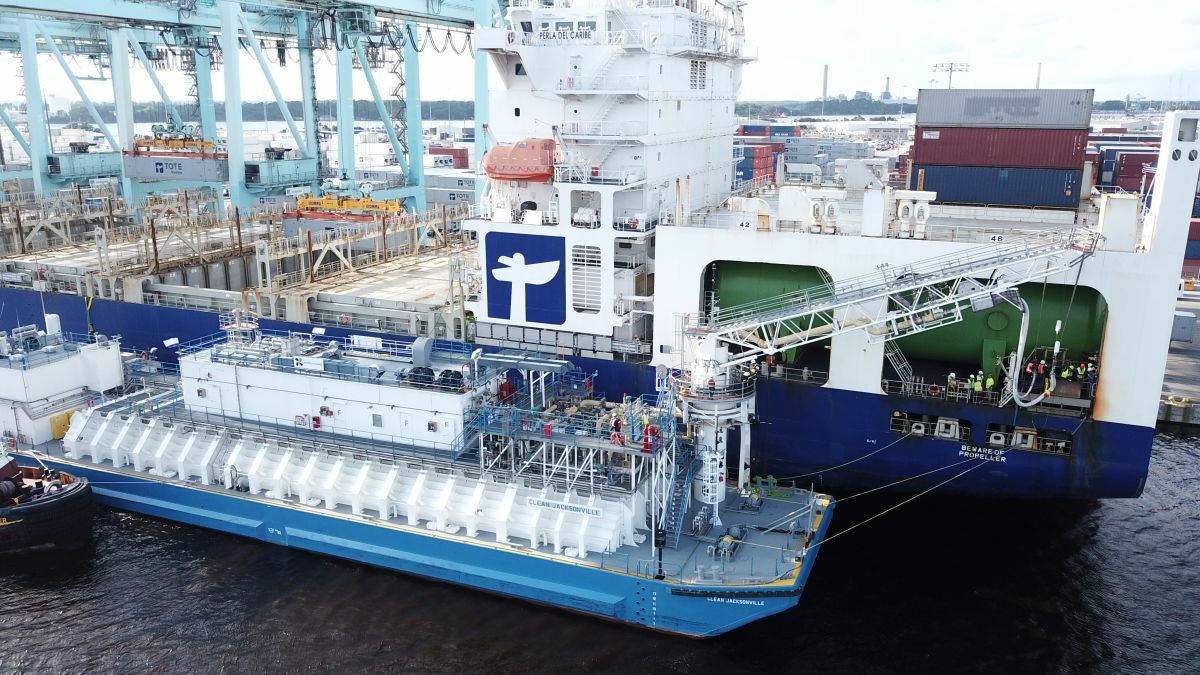(Bloomberg) —
Chinese lawmakers got a head start on the US election this week as they gathered to vote on the largest fiscal package since the pandemic.
But now that Donald Trump commands a sweeping mandate to govern the world’s biggest economy, a vision likely to emerge from the meeting in Beijing on Friday may go far beyond the more immediate steps telegraphed by Chinese authorities.
The prospect of an expanded trade war during the US president-elect’s second term — even if it falls short of the threatened 60% tariff — is raising expectations for greater stimulus going into next year, as China braces for a new era of protectionism that could put harsher constraints on trade.
“In reality, the tariff hike may be smaller and narrower than what Trump has floated,” Macquarie Group Ltd. economists wrote in a report Wednesday. “As a result, Beijing may not react pre-emptively, but may decide the size of the stimulus later in response to the actual tariffs.”
Economists at Standard Chartered Plc and Macquarie project China’s growth would suffer a hit of as much as two percentage points should Trump follow through on his campaign vow to raise tariffs on Chinese goods to 60%. Even if the eventual barriers prove less punitive, the onus will increasingly lie on fiscal policy to offset the shock to external demand.
This is a modal window.
The media could not be loaded, either because the server or network failed or because the format is not supported.
On Friday, China’s top legislative body is set to reveal a package centered around a plan to refinance local governments’ off-balance-sheet debt. It may also offer clues on the scale of government borrowing and expenditure next year.
The country would need greater public spending to boost domestic consumption and investment if exports stop being a major driver of the economy.
Trump’s pledge to raise tariffs on Chinese goods to 60% will likely reduce China’s shipments to the US by up to 70% over the following year, according to Standard Chartered. The nation’s total exports could decline by about 8%, Macquarie projects.
Many economists see an increase of 10% to 20% as a more realistic scenario, since the US hiked tariffs by about 15% during the previous round of trade tensions between 2018 and 2020.
What’s more, China has diversified its export markets in recent years and became less reliant on the US as a destination for its products, likely helping mitigate any fallout.
Investors and economists may have to wait for more clarity on China’s strategy and potential response until the Communist Party’s Politburo meeting and the Central Economic Work Conference in December.
What Bloomberg Economics Says…
“Beijing already believes that the US is trying to contain China, and economic and technological self-reliance is already a priority. Still, further US actions — especially massive tariffs — would hurt, and Beijing would likely feel the need to respond.”
— For full analysis, click here
An additional tariff hike of 15% may lead to a 0.5 to 1 percentage point drag on China’s economic growth, according to Citigroup Inc. Morgan Stanley economists estimate the likely impact at less than a percentage point if the US imposes 50% tariffs on Chinese exports.
At 60%, they could require 3 trillion yuan ($420 billion) in stimulus to counter the damage, with another 3 trillion yuan needed to turn around weak domestic demand, according to estimates by Macquarie.
China will likely opt to widen the official budget deficit for 2025 to 4.8 trillion yuan, or 3.5% of gross domestic product, said Standard Chartered economist Ding Shuang, who predicts the fiscal package could be up to 2 trillion yuan bigger after Trump’s reelection. That will likely boost GDP growth by 0.5 to 1 percentage point, he said in a note on Thursday.
In the previous US-China trade war during the first Trump administration, the US raised the effective tariff rate on Chinese exports to 19.3% in early 2020, from 3.1% in early 2018. Some 66% of Chinese goods were subject to additional tariffs as a result, according to Sydney-based Macquarie.
Chinese exporters have since been diversifying their markets and shipping via third countries, which then re-export to the US, they wrote. If the US raises tariffs on the rest of the world, this strategy could prove more difficult to sustain for China.
In the years since the pandemic, exports have played a more significant role in boosting China’s economic growth, as overseas demand for goods surged and officials made efforts to avoid disruption even during Covid lockdowns.
Domestic demand has since sagged, however, after households and businesses became increasingly pessimistic as a result of a persistent property downturn. Lay-offs and pay cuts in sectors from finance to tech also weighed on consumption.
“We cannot rely on exports to carry China’s economy,” said Zhiwei Zhang, chief economist at Pinpoint Asset Management. “I expect fiscal policy will become more proactive next year as a pillar for growth.”
© 2024 Bloomberg L.P.

 Join The Club
Join The Club











